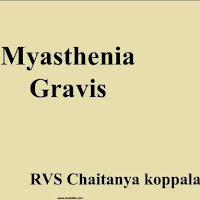Download Pharmacology of Myasthenia Gravis PDF Notes
Explore and download comprehensive PDF notes and potential PPT slides on the Pharmacology of Myasthenia Gravis. This resource delves into the essential pharmacological aspects, including drug classifications, mechanisms of action, therapeutic strategies, and potential adverse effects related to the treatment of Myasthenia Gravis. Ideal for students of medicine, pharmacy, and healthcare professionals aiming to deepen their understanding of managing this autoimmune disorder. You can download the Myasthenia Gravis pharmacology PDF for free or choose to view it directly online.
Keywords: pharmacology of myasthenia gravis pdf, download myasthenia gravis notes, myasthenia gravis treatment ppt, free pharmacology notes, myasthenia gravis drug therapy, anticholinesterase inhibitors pdf, immunosuppressants for MG, medical study material download, view online PDF.
In-Depth Explanation: Pharmacology of Myasthenia Gravis
Myasthenia Gravis (MG) is a chronic autoimmune disorder that affects the neuromuscular junction (NMJ), leading to fluctuating weakness and fatigability of skeletal muscles. The core pathology involves autoantibodies, primarily against acetylcholine receptors (AChRs), which impair neuromuscular transmission by blocking acetylcholine binding, accelerating AChR degradation, or damaging the postsynaptic membrane via complement activation. The pharmacological management of MG is multifaceted, focusing on symptomatic relief and immunomodulation.
Primary Therapeutic Strategies
The pharmacological approach to Myasthenia Gravis aims to:
- Enhance cholinergic transmission at the NMJ to improve muscle strength.
- Suppress the underlying autoimmune response to reduce autoantibody production and preserve NMJ function.
- Manage acute exacerbations, known as myasthenic crises.
Key Drug Classes and Mechanisms
1. Acetylcholinesterase Inhibitors (AChEIs)
AChEIs are the cornerstone of symptomatic treatment. They inhibit the enzyme acetylcholinesterase, which breaks down acetylcholine (ACh) in the synaptic cleft. By reducing ACh degradation, these drugs increase the concentration and prolong the duration of action of ACh at the NMJ, thereby improving the chances of ACh binding to the reduced number of available functional AChRs.
- Pyridostigmine (Mestinon): The most commonly used oral AChEI due to its relatively longer duration of action (3-6 hours) and smoother effect profile compared to neostigmine. Dosage is highly individualized.
- Neostigmine: Available in oral and parenteral forms; has a faster onset but shorter duration of action than pyridostigmine. Used for diagnostic purposes (Tensilon test, although edrophonium was more common but is less available) and for acute management.
Adverse Effects: Primarily cholinergic (muscarinic) side effects such as abdominal cramps, diarrhea, nausea, increased salivation, lacrimation, bradycardia, and bronchoconstriction. Nicotinic effects like muscle cramps and fasciculations can also occur. Overdosage can lead to a cholinergic crisis, characterized by increased weakness and excessive muscarinic effects, which can be difficult to distinguish from a myasthenic crisis.
2. Immunosuppressive Therapies
These agents aim to reduce the production of pathogenic autoantibodies and modulate the immune response. They are crucial for long-term disease control and are often used in conjunction with AChEIs.
- Corticosteroids (e.g., Prednisone, Prednisolone): Highly effective in inducing remission. They have broad anti-inflammatory and immunosuppressive actions. Treatment usually starts with a higher dose, which is then gradually tapered to the lowest effective maintenance dose to minimize long-term side effects (e.g., weight gain, osteoporosis, diabetes, hypertension, cataracts).
- Steroid-Sparing Agents: Used to reduce corticosteroid dependence and their associated side effects, or as primary immunosuppressants in some cases.
- Azathioprine: A purine analog that inhibits lymphocyte proliferation. Its onset of action is slow (3-6 months or longer). Requires monitoring for myelosuppression and hepatotoxicity.
- Mycophenolate Mofetil (MMF): Inhibits inosine monophosphate dehydrogenase, an enzyme essential for de novo purine synthesis in lymphocytes. Generally well-tolerated, but its onset of action can also be slow.
- Cyclosporine and Tacrolimus: Calcineurin inhibitors that suppress T-cell activation. Effective but require careful monitoring due to potential nephrotoxicity, hypertension, and other side effects.
- Methotrexate: Sometimes used as an alternative steroid-sparing agent.
3. Rapid Immunotherapies
Used for rapid improvement in severe MG, myasthenic crisis, or as a bridge to slower-acting immunosuppressants.
- Intravenous Immunoglobulin (IVIg): Pooled human IgG that modulates the immune system through various mechanisms, including neutralization of autoantibodies and anti-inflammatory effects. Generally well-tolerated.
- Plasma Exchange (PLEX) or Plasmapheresis: A procedure that physically removes autoantibodies and other immune mediators from the patient's blood. Provides rapid but temporary improvement.
4. Biologic and Novel Targeted Therapies
These represent newer approaches targeting specific components of the immune system involved in MG pathogenesis.
- Rituximab: A monoclonal antibody targeting CD20 on B-cells, leading to B-cell depletion. Shows promise, particularly in MuSK-antibody positive MG and refractory AChR-antibody positive MG.
- Eculizumab and Ravulizumab: Monoclonal antibodies that inhibit the terminal complement component C5, preventing the formation of the membrane attack complex (MAC) and subsequent damage to the NMJ. Approved for generalized AChR-antibody positive MG.
- FcRn Antagonists (e.g., Efgartigimod, Rozanolixizumab): Target the neonatal Fc receptor (FcRn), which normally protects IgG from degradation. By blocking FcRn, these drugs accelerate the clearance of IgG, including pathogenic autoantibodies.
Management of Myasthenic Crisis
A myasthenic crisis is a life-threatening exacerbation of MG characterized by respiratory failure. It requires intensive care unit (ICU) admission, ventilatory support, and rapid immunotherapies (PLEX or IVIg). AChEIs are often temporarily withheld or reduced during a crisis because excessive cholinergic stimulation can worsen respiratory secretions and muscle weakness.
The choice of pharmacological agents for Myasthenia Gravis is tailored to the individual patient, considering disease severity, antibody status (AChR, MuSK, LRP4), age, comorbidities, and response to previous treatments. Ongoing research continues to refine existing therapies and develop new, more targeted approaches to improve outcomes for individuals with this complex autoimmune disease.
Info!
If you are the copyright owner of this document and want to report it, please visit the copyright infringement notice page to submit a report.

